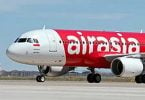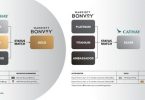Total traffic in August 2022 (measured in revenue passenger kilometers or RPKs) was up 67.7% compared to August 2021. Globally, traffic is now at 73.7% of pre-crisis levels.
Domestic traffic for August 2022 was up 26.5% compared to the year-ago period. Total August 2022 domestic traffic was at 85.4% of the August 2019 level.
International traffic rose 115.6% versus August 2021 with airlines in Asia delivering the strongest year-over-year growth rates. August 2022 international RPKs reached 67.4% of August 2019 levels.
“The Northern Hemisphere peak summer travel season finished on a high note. Considering the prevailing economic uncertainties, njem chọrọ is progressing well. And the removal or easing of travel restrictions at some key Asian destinations, including Japan, will certainly accelerate the recovery in Asia. The mainland of China is the last major market retaining severe COVID-19 entry restrictions,” said Willie Walsh, obodo ntà's Director General.
| Ọgọst 2022 (% afọ na afọ) | òkè ụwa1 | RPK | Jụọ | PLF (%-pt)2 | PLF (ọkwa)3 |
| Mgbakọta Ahịa | 100.00% | 67.70% | 43.60% | 11.80% | 81.80% |
| Africa | 1.90% | 69.60% | 47.60% | 9.80% | 75.70% |
| Asia Pacific | 27.50% | 141.60% | 76.50% | 19.90% | 74.00% |
| Europe | 25.00% | 59.60% | 37.80% | 11.80% | 86.20% |
| Latin America | 6.50% | 55.00% | 46.60% | 4.50% | 82.40% |
| Middle East | 6.60% | 135.50% | 65.40% | 23.70% | 79.60% |
| North America | 32.60% | 29.60% | 20.00% | 6.40% | 85.60% |
| 1% nke RPK ụlọ ọrụ na 2021 2year-on-year change in load factor 3Ibu Ibu Ọkwa |
Ahịa ndị njem mba ofesi
• Asia-Pacific airlines had a 449.2% rise in August traffic compared to August 2021. Capacity rose 167.0% and the load factor was up 40.1 percentage points to 78.0%. While the region experienced the strongest year-over-year growth, remaining travel restrictions in China continue to hamper the overall recovery for the region.
• European carriers’ August traffic climbed 78.8% versus August 2021. Capacity rose 48.0%, and load factor increased 14.7 percentage points to 85.5%. The region had the second highest load factor after North America.
• Middle Eastern airlines’ traffic rose 144.9% in August compared to August 2021. Capacity rose 72.2% versus the year-ago period, and load factor climbed 23.7 percentage points to 79.8%.
• North American carriers saw a 110.4% traffic rise in August versus the 2021 period. Capacity rose 69.7%, and load factor climbed 16.9 percentage points to 87.2%, which was the highest among the regions.
• Latin American airlines’ August traffic rose 102.5% compared to the same month in 2021. August capacity rose 80.8% and load factor increased 8.9 percentage points to 83.5%.
• African airlines experienced a 69.5% rise in August RPKs versus a year ago. August 2022 capacity was up 45.3% and load factor climbed 10.8 percentage points to 75.9%, the lowest among regions. International traffic between Africa and neighboring regions is close to pre-pandemic levels.
Ahịa ndị njem n'ụlọ
| Ọgọst 2022 (% afọ na afọ) | òkè ụwa1 | RPK | Jụọ | PLF (%-pt)2 | PLF (ọkwa)3 | ||
| Ọ bụ | 62.30% | 26.50% | 18.90% | 4.70% | 79.70% | ||
| Australia | 0.80% | 449.00% | 233.70% | 32.10% | 81.90% | ||
| Brazil | 1.90% | 25.70% | 23.40% | 1.50% | 81.20% | ||
| China PR | 17.80% | 45.10% | 25.70% | 9.00% | 67.40% | ||
| India | 2.00% | 55.90% | 42.30% | 6.90% | 78.90% | ||
| Japan | 1.10% | 112.30% | 40.00% | 24.00% | 70.60% | ||
| US | 25.60% | 7.00% | 3.30% | 3.00% | 84.60% |
1% of industry RPKs in 2021 2year-on-year change in load factor 3Load Factor Level
• Australia’s domestic traffic posted a 449.0% year-over-year increase and is now 85.8% of 2019 levels.
• US domestic traffic was up 7.0% in August, compared to August 2021. Further recovery is limited by supply constraints.
| August 2022 (% ch vs the same month in 2019) | World share in1 | RPK | Jụọ | PLF (%-pt)2 | PLF (ọkwa)3 |
| Mgbakọta Ahịa | 100.00% | -26.30% | -22.80% | -3.90% | 81.80% |
| International | 37.70% | -32.60% | -30.60% | -2.50% | 83.20% |
| Ọ bụ | 62.30% | -14.60% | -8.10% | -6.00% | 79.70% |
The Bottom Line
This week marks a year since the IATA AGM took the historic decision to achieve net zero carbon emissions by 2050.
“Aviation is committed to decarbonizing by 2050, in line with the Paris agreement. And the energy transition required to achieve this must be supported by government policies. That is why there is such great anticipation for the 41st Assembly of the International Civil Aviation Organization to reach agreement on a Long-Term Aspirational Goal on aviation and climate change. The near grounding of aviation during the pandemic highlighted how important aviation is to the modern world. And we will take a giant step towards securing the long-term social and economic benefits of sustainable global connectivity, if the policy-vision of governments is aligned with the industry’s commitment to net zero by 2050,” said Walsh.























